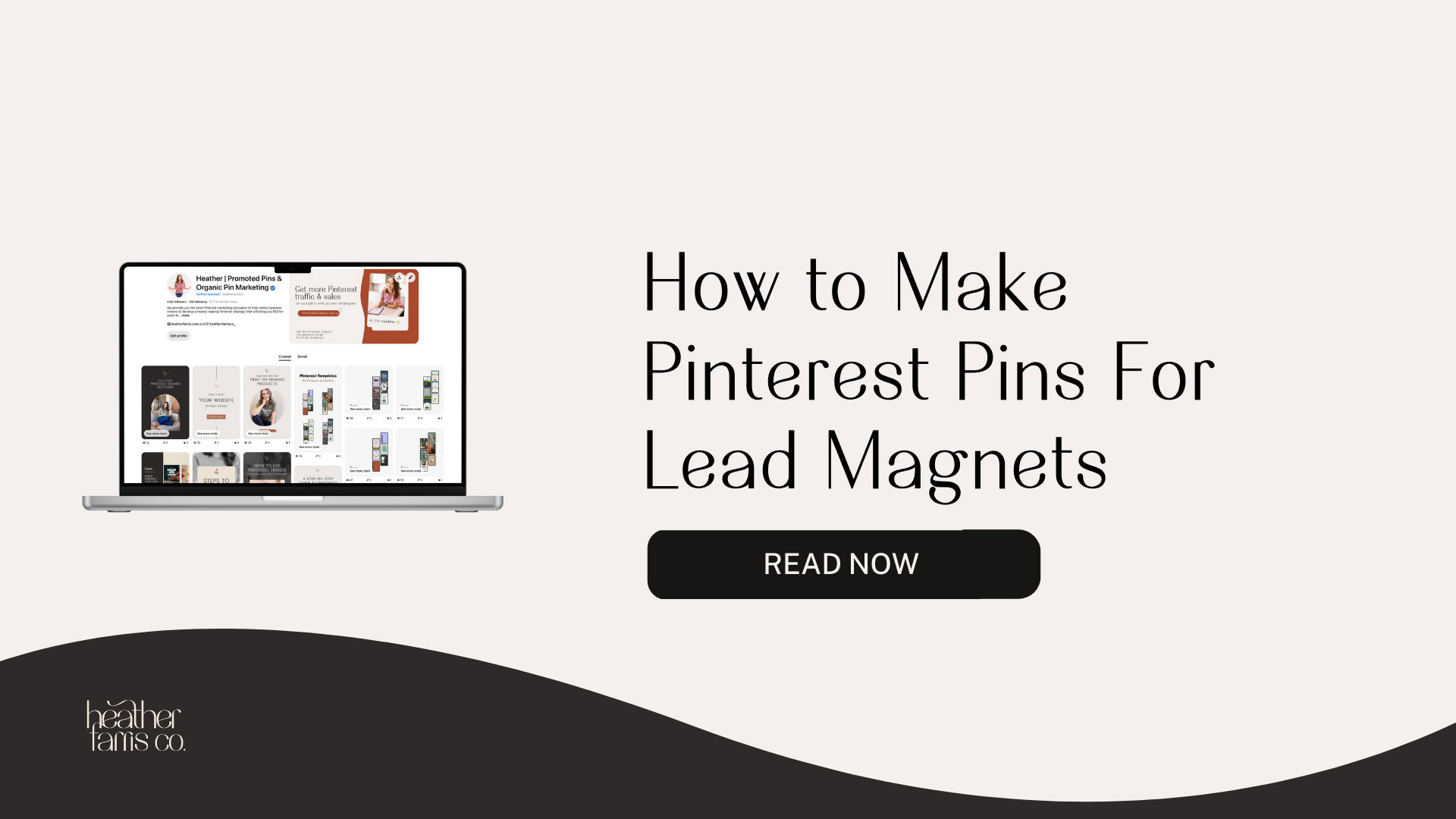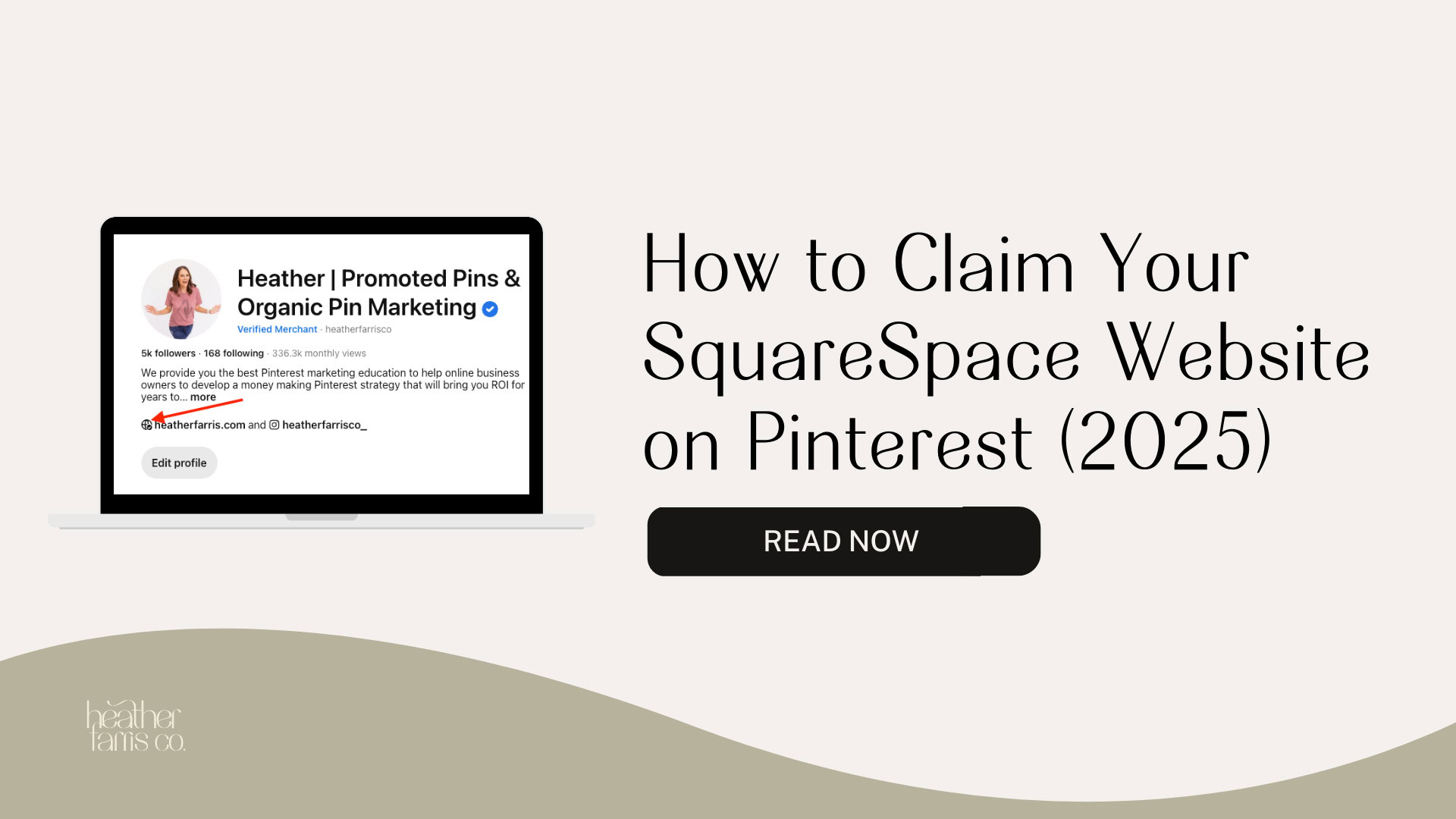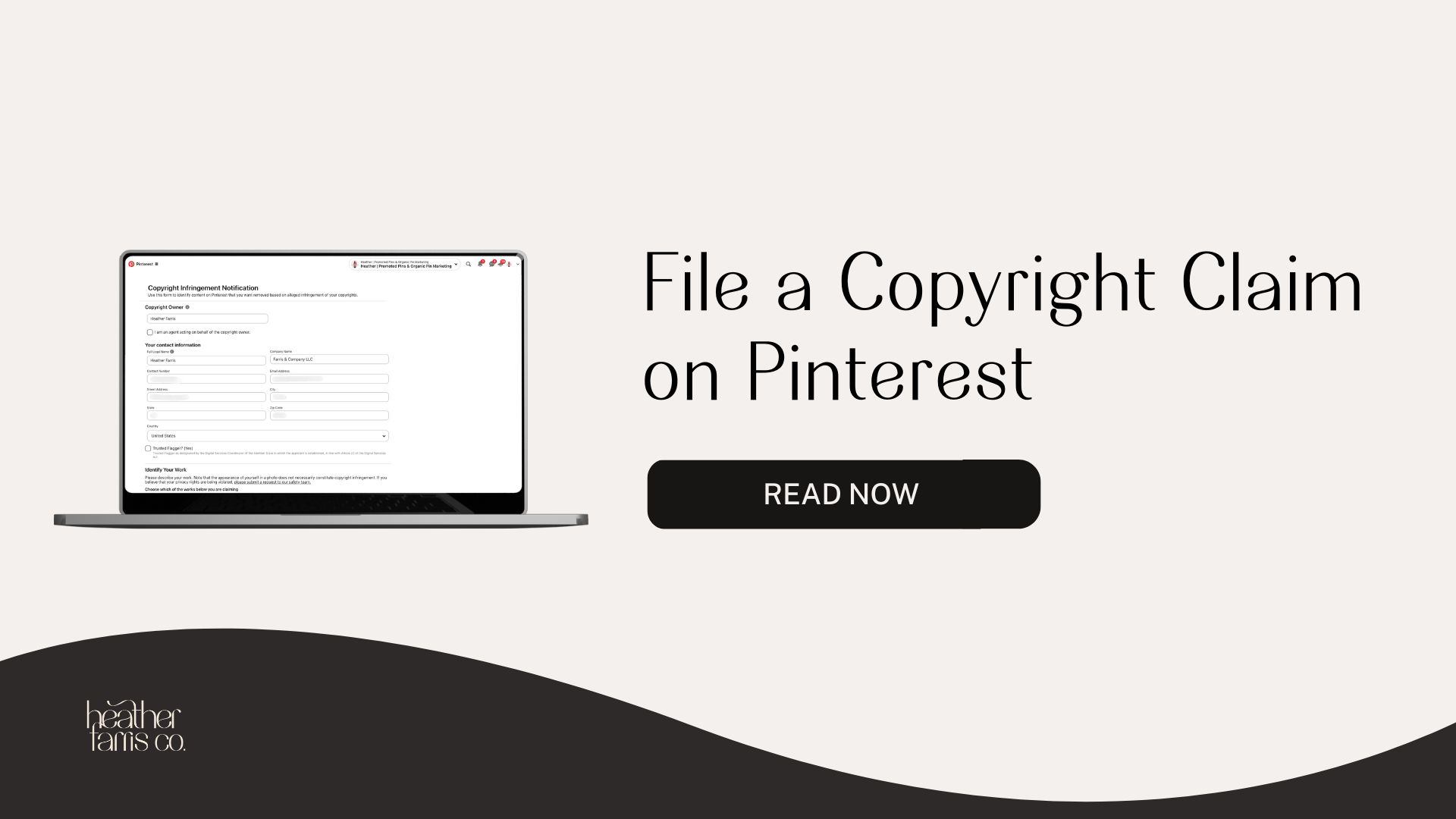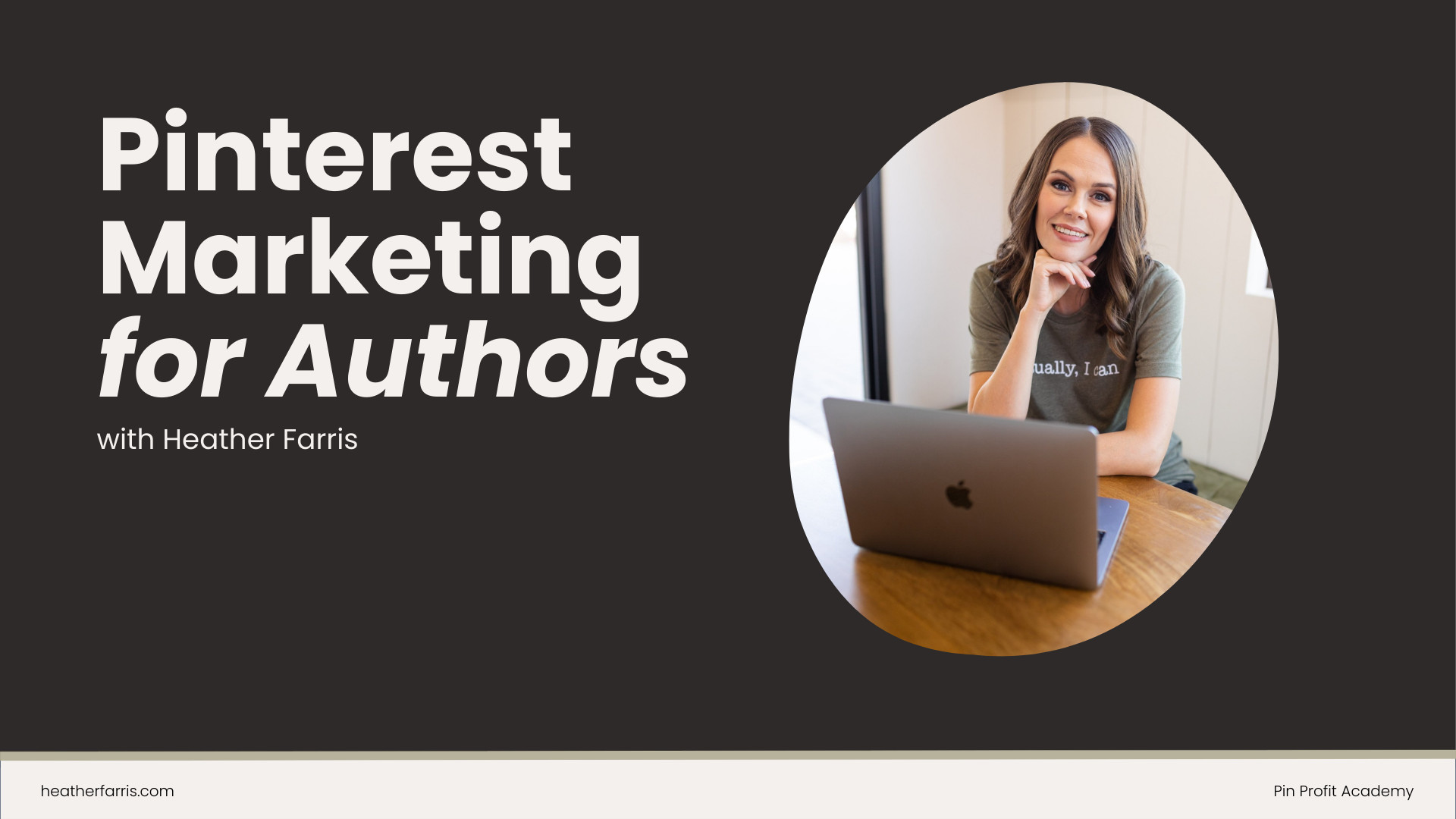Heather is a seasoned
Pinterest marketing expert & educator using the platform since you could reach the bottom of the feed - 2010.
About Heather Farris >
Tripwire Funnel: How to Create a Powerful Lead Generation Machine
November 16, 2020
A tripwire funnel has always been popular but with the rise of small products in the last few years they are becoming more popular than ever.
Not many online business owners realized they could create small digital products and sell them.
The idea of a tripwire funnel is to pay for your ad spend so your upsells are pure profit.
I want to break down the tripwire sales funnel for you and show you exactly what you need to do, and how one of my clients increased her sales by 200% using this same strategy.
This post contains affiliate links. I will make a small commission if you click a link and make a purchase. Read more here.
What does a tripwire in marketing mean?
Tripwire in marketing means offering a small product for sale right behind a free lead magnet with the intention of upselling a higher priced offer later.
It’s easier to sell to someone in the future if they are already a customer. Warm leads simply convert better and if you structure your funnel and offers correctly you’ll leave your audience wanting more!
But Heather, what is tripwire used for?
Well it’s typically used to pay for your ad spend up front so your upsells make you a profit. They’re not usually money makers, however if you sell on a large scale they certainly can be.
Before we can talk strategy we probably need to talk about the offers you’ll create and sell inside your tripwire funnel.
What are digital products and services?
In my experience, tripwire funnels usually consist of digital products and services. In my own business, right here on this blog we sell digital products in our funnels.
Digital products and services are exactly what they sound like – digital.
We sell templates, guides, courses, spreadsheets, dashboards and more.
What are some examples of digital products?
Here is a list of popular digital products:
- eBooks
- Spreadsheets
- Mini-courses
- Memberships
- Strategy sessions
- Art prints
- Music
- Videos
- Apps
If you want to learn more about how to sell digital products definitely read that post I wrote detailing this exact topic.
What is a tripwire funnel strategy?
A tripwire funnel strategy can vary based on who you ask but I’m going to show you our approach for it.
For tripwires I prefer to use something I already have that will work well in my overall funnel & serve the purpose of selling my higher priced offer.
For this strategy I like to break it down like this:

The tools are going to be what you giveaway for free. That is your opt-in that gets people into your world.
Then you’re going to sell your system. This is typically what your audience needs but they think they need the tool.
The strategy is the last thing in your funnel that you will sell. This is your higher priced product that you’re ultimately going to make a profit from.
Most people get this wrong — including myself at one point.
Do not start by creating your free lead magnet then your tripwire. You need to think about the ultimate upsell and work backwards.
If you don’t work backwards you may end up creating a funnel that converts on a small scale or not at all.
My own mistake was starting with the tripwire product and not structuring my funnel in a way that ultimately led to the thing my audience actually needed.
So start with the end and work your way to the beginning.
How do I structure my tripwire funnel?
My tripwire funnel is structured to sell my course Pin Profit Plan. So let me detail what my funnel looks like throughout and how I did this for all of my offers.
I started with my ultimate goal of selling my course — the strategy.
Then I took out a piece of it and made that my tripwire product — the system.
Now what my audience thinks they need is strategy and while I do call my opt-in a “strategy guide” it’s really the tool they need to get started.
It’s the 5 part roadmap for the Pinterest strategy my agency uses with our clients.
So it looks like this:
Strategy Guide > Pinterest System > Pinterest Course
I even have an order bump in my funnel flow to increase the overall cart value and the value I provide my customers. This is not required!

How do you price tripwire products?
My strategy guide is free and my tripwire product is $17 with my upsell priced at $97. Now I’m not an expert at pricing but when I run cold traffic to this funnel it converts well.
I would say depending on your audience and the platform you are using to drive traffic your pricing may need to vary.
When we are dealing with consumers on Pinterest I typically go with the philosophy of the wife buying the product and she may need to ask her husband if he’s good with that purchase.
Now I’m not saying that’s standard but I can say with good faith that I was a stay at home mom with a one income family and when I purchased anything over $100 I ran it by my husband first.
Now that isn’t the case on Facebook because that audience is full of impulse buyers.
Pinners are planners and they may not be ready to invest right away. On average, I have seen a conversion take 16 days from Pinterest.
So keep in mind you may need to test your pricing but I would say across the board pricing is $7-97 for tripwire products.
What tools can I use for my tripwire funnel?
There are way too many tools out in the digital world so I’m going to give you a list of the tools I most commonly use.
- ★ LeadPages – page building
- ★ Elementor – page building
- ★ ConvertKit – capturing emails
- SendOwl – selling products
- ★ AccessAlly – building courses & memberships
- Thinkific – building courses & memberships
- Shopify – selling products
- ThriveCart – selling products
- ★ Stripe – selling products
- ★ PayPal- selling products
- ★ Deadline funnel – urgency timer
While this list isn’t all inclusive it’s what I use for myself and for clients. I don’t use all of these myself anymore but I do use them for clients.
I personally use all of the items that are starred above.
How do I make a tripwire funnel?
This is the part of the process where most people get confused and I lose them. Your funnel needs to be setup like this and you will need proper tools to make this happen.
You start with your lead magnet and it needs to be setup to redirect to your tripwire page.
Now all of my tripwire pages have a header that looks like this below.
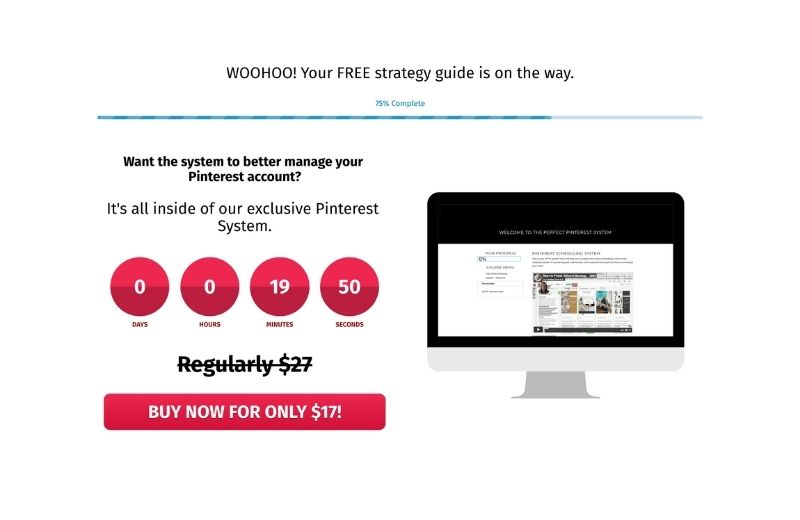
This tells my customer that they have successfully signed up for my strategy guide but I’m not done with them yet.
I never embed my lead magnet on my tripwire page because I want my new lead to open my emails and signal to their email provider that my emails are important.
I use LeadPages for all of my pages.
I connect my opt-in box on LeadPages to ConvertKit so that the first email fires off while they are now presented with a small priced product.
My tripwire page contains a signup event code for ad tracking purposes.
Now on this tripwire page if they purchase they are taken to a cart page on my website where an add to cart event code fires.
Once they get into the purchase process they are prompted with an order bump. Whether they take the order bump or not they are taken to an upsell page to purchase my course.
This sales page for my course contains a checkout event code for ads tracking purposes.
My course sales page is built on Elementor on my domain. Don’t ask me why I did this but I did and alas it’s how it will remain.
I have created and sold so many different digital product ideas in my tripwire funnels and inside of self liquidating offers. You will want to pay attention to your audience and what they are needing.
All of my offers outside of the tripwires are sold as self-liquidating offers.
What are self liquidating offers?
Self-liquidating offers are pretty much just higher priced tripwires. They are typically starting around $27 with an order bump and upsell.
I just make all of my funnels also a tripwire so I can convert freebie seekers into paying customers faster. I love a good tripwire sales funnel because it does convert really well for my audience.
Pinterest Ads Strategy for Tripwire Funnels
I love a good tripwire funnel paired with Pinterest ads. Earlier this year I had one of my clients add a tripwire product into her funnel and we increased her ROI by 200%. The month we launched we made $14,900.
The previous launch we made roughly $5000. This was all due to her tripwire product and the warmer leads we brought in during pre-launch.
If you want to read my case study for this client you can grab that right now as well as my Pinterest Ads checklist.
I love running tripwire ads for clients because these always net a good ROI for them.
You run the ad to the lead magnet and watch the tripwire sales roll in (as long as you created the funnel correctly according to what your audience wants).
So that’s it! Do you want to create a tripwire funnel for your business now? If you need help with this we do offer a service to help you strategize, create and launch those offers.
Learn Pinterest Ads Basics
I’ve added a new Pinterest Ads course for beginners to Pin Profit Academy. Join today and dive into the basics of setting up your own ads to your tripwire funnel.
Pin It For Later
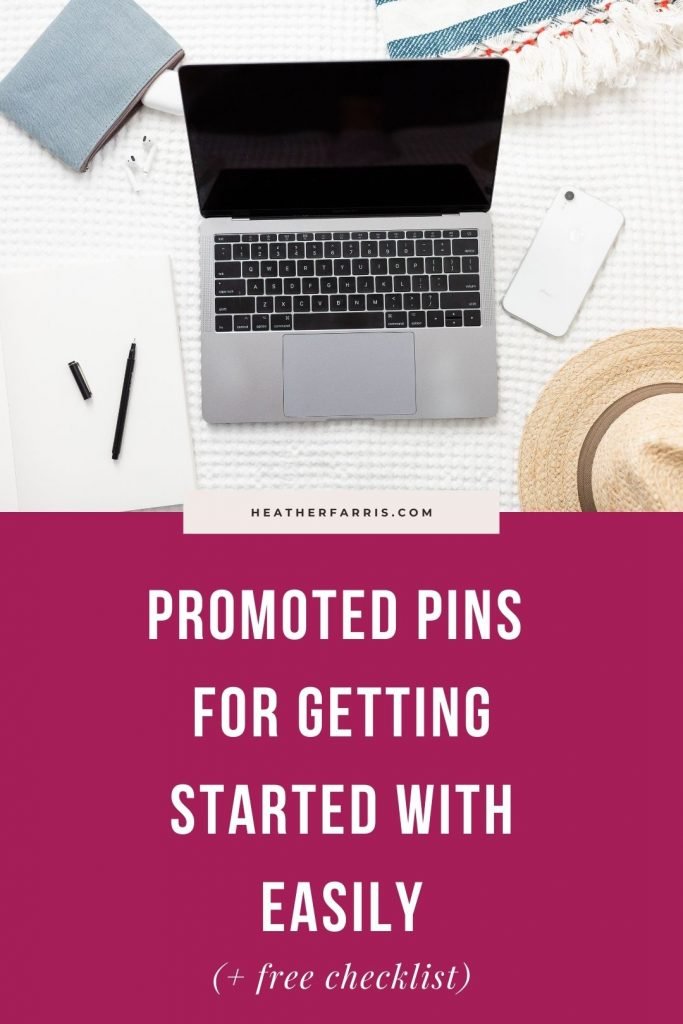

Heather Farris went to school for accounting and worked for years in banking and finance. After finding all of that entirely too boring she started her first blog in her basement in August of 2016. She has started 3 blogs in the marketing, motherhood and travel niches and used Pinterest to grow them all. She quickly became the go-to Pinterest strategist in her peer circles and has been implementing strategies, driving traffic and sales through organic and paid tactics for her clients. On this blog and her YouTube channel, as a renowned Pinterest marketing expert, she educates the public about clear and transparent marketing strategies to help them to grow on Pinterest and in other places online as a renowned Pinterest marketing expert.
